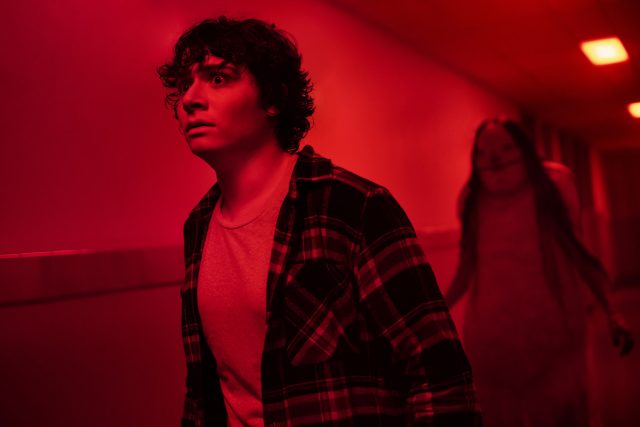Scary Stories to Tell in the Dark: What Do You Come For?, by David Bax

It feels petty, or at least tired, to complain about a modern monster movie’s over-reliance on fake-looking CGI. But, in the case of Andre Øvredal’s Scary Stories to Tell in the Dark, the technique does more than just rob the images of tactility and weight. It directly contradicts the feel of Alvin Schwartz’s books on which the film is based, collections of folklore with roots growing deep down into the history of humanity’s most primal shared fears.
With the help of producer Guillermo del Toro and a whole gaggle of other screenplay and story credits, Øvredal’s adaptations of these powerfully short stories are forced into an uber-narrative about a group of teens who break into a haunted house on a dare, remove a book they shouldn’t have and pay the price by suffering, one by one, the fates assigned to the characters in the tales contained within.
Scary Stories takes place in 1968, opening with Richard Nixon campaign posters and the sounds of Donovan’s “Season of the Witch” and later adding references to Vietnam and the draft. Specifically, the movie unfolds in the five days between Halloween and the Nixon’s election, a rich week of American history from which the movie fails to mine as much as it ought to.
That Nixon poster in the opening shots has been defaced so that the X in the name becomes a swastika, a move that draws a parallel to the present day crises we face as a nation while also, perhaps accidentally, downplaying the actual campaign of white supremacy being carried out by our current administration. One of our main characters, Ramon (Michael Garza), does face explicit and repeated anti-Latinx discrimination but Scary Stories whiffs on the relevancy of this as well by ultimately landing on some fuzzy, agnostic, feel-good message about how our real problem is that we’re all too mad at each other, as if racism is a “both sides” type of issue. More intriguing is the fact that Ramon has dodged the draft. When we hear the U.S.’s war in Vietnam decried as “sending our children to die,” it can’t help but echo with the deaths of children we see realized onscreen. America’s sins are inescapably visited upon the younger generations.
It would be charitable and rosy-eyed of me to also ascribe the movie’s glaringly anachronistic dialogue to a further attempt to connect the past and present. No, it’s probably just laziness when en vogue non-jokes like “Really?” and “That’s really dark” are used as punchlines. In other cases, the screenplay is less out of step with time and more just plain bad: “You don’t read the book. The book reads you.”
Okay but is the movie scary? Sometimes but not often enough. Øvredal and his team went to great lengths to recreate the monsters and ghosts as drawn by Stephen Gammell in the illustrations that accompanied Schwartz’s text. In too many cases, though, the attempt to translate the feel of the books to the movie end there. New elements like a car chase and a Stephen King-esque psychotic bully are unable to meld with the existing material. And, when he does stick to the source, Øvredal fails to understand why something like the nonsense chant “Me Tie Dough-Ty Walker” is so uncannily terrifying. Schwartz knew how to get across that these ghouls were scary because of their intrinsic and indelible nature, not because they were stock movie boogeymen, as interchangeable as the pixels that make them up.




























Agree they could have left out the political aspect, but so could you have from your commentary. Having media mouthpieces call a President, or any other official, out as performing a ‘white supremacy’ campaign does not make it so and minimizes the pain that those movements actually have caused in the past. The movie sucked, plain and simple, and injecting Nixon in it made no sense – even my teenage daughter was confused by that. Take care.